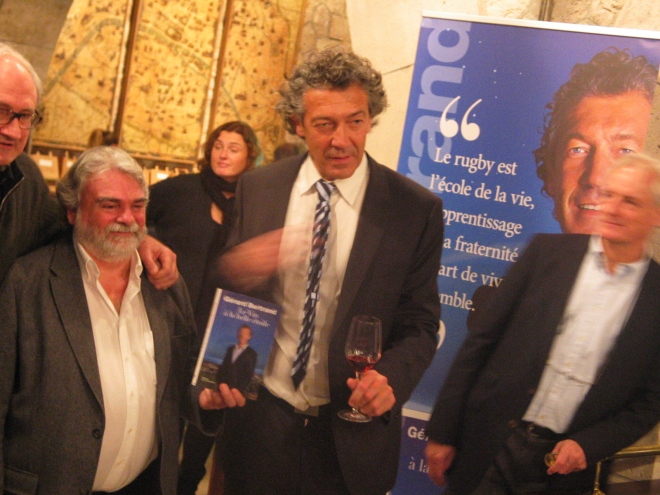by Paige Donner
The World of Wine has endless gems in store for you to discover. That is what's so riveting about continuing along the path of wine exploration. Just when you think you've come across most of France's highlights, there are still more yet awaiting your discovery.
Pacherenc du Vic-Bilh is one of these wines. In a culture that tends to evoke the wines of Sauternes and Barsac when discussing sweet wines, this is a lovely discovery that comes from a different region in France, the Southwest. AOC Pacherenc du Vic-Bilh is just 40 km from Pau and in fact faces the Pyrénées.
The real difference of this sweet wine is not the time of its harvest, as it's harvested late in the year, from mid-November up until mid-December, similar to other sweet wines and much like the famous German and Canadian ice wines. No, the real difference is that these wines take their sweetness from their maturation and not from botrytis (noble rot).
The first historical reference to this wine, Pacherenc du Vic-Bilh, is from 1745 in a document found that forbids harvest that year before November 4th in this particular region of Southwestern France. That year the harvest took place mid-November during what's known as a sort of Indian Summer in that area of France, locally called the Summer of Saint Martin, l'été de la Saint-Martin.
Named after the festival day during that Indian Summer, the cuvée Saint-Albert 2012 made by Alice and Paul Dabade (Barrique and Lot 7.1-7.2-7.3-7.4) is exemplary of this AOC Pacherenc du Vic-Bilh sweet wine. It's a blend of Gros Manseng, Petit Manseng and Petit Courbu. It was harvested late in 2012, starting December 12.
For the bouquet you can expect rhubarb and mandarin orange. On the mouth, the silky suaveness of the sweet is balanced nicely by a fresh acidity that hits you on the finish. As it ages it picks up notes of white truffles. If you like sweet wines this is truly one of the privileged sweet wines and relatively unknown simply because so little of it is produced.
Pairs well with foie gras and Roquefort; Also as an aperitif. For dessert it goes nicely with a fruit pie or tart and also light fresh sorbets such as passion or lemon. Serve 8-10°C.
Awards: Gold Medal, 2013, Paris Agricultural Fair



